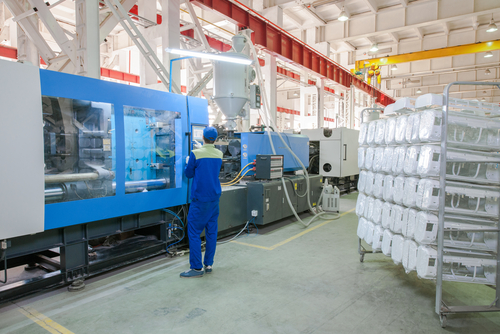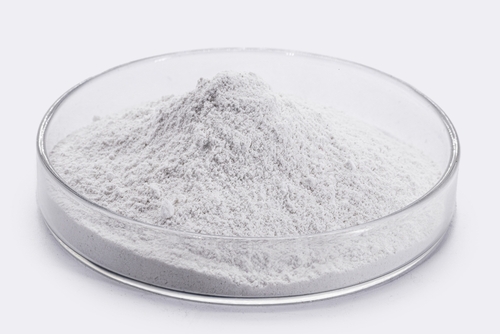Sintering is the process of compacting solid materials that result in a more durable, stronger, and harder mass due to pressure and high heat that force the atoms to bond more tightly with each other. It’s one of the essential machining processes applied by ceramic component manufacturers. Continue reading to learn more about the sintering method.
What is the powder sintering process?
During the process of sintering, ceramic powder particles undergo heating to a high temperature below the melting point, where their vapor-solid interface decreases, resulting in reduced surface energy of the particles. The existing pores diminish or fully close up, creating a higher-density material and improving the mechanical properties of the part.

The final level of porosity depends on the green compact’s initial porosity, as well as the temperature and duration of sintering. Pure oxide ceramics require longer time and higher temperatures since particle diffusion occur in the solid state. Also, applying pressure reduces sintering time and porosity.
The process of sintering is considered successful when it results in reduced porosity and enhanced translucency, strength, thermal conductivity, and electrical conductivity of the material. In specific cases, careful application of sintering can improve the strength while preserving porosity.
What are the stages of sintering?
The base principles of sintering involve:
Powder composing
This is the stage where you determine the composition of your ceramic parts by mixing water, deflocculant, binder, and unfired ceramic powder to create a slurry which is then spray-dried. The properties of powdered materials will affect the final characteristics of the part, such as strength, hardness, and temperature conductivity.
Powder compacting
Compaction can involve different processes of mechanical densification through cold or hot mold pressing that result in the green part. Compaction allows for the efficient production of components with tight tolerances due to low drying shrinkage.
Sintering or firing
The green part further goes through a tunnel kiln or periodic kiln for heating. In a periodic kiln, the components go through heating and cooling stages according to a set system. A tunnel kiln conveys the parts through three different temperature zones:
- Preheat zone removes lubricants and other organic materials.
- Sintering zone is where atom diffusion occurs to fuse the particles together and create a solid piece.
- Cooling zone allows the part to cool down.
Sintering can be done with or without an external force such as pressure, which is commonly used. When it’s performed only by heating, it’s referred to as pressureless sintering, and it’s possible with metal-ceramic composites.
You can separate the parts using special separator sheets for efficient product stacking during the process of sintering. The sheets are available in different materials such as magnesia, alumina, and zirconia. They’re also categorized by particle size, including coarse, medium, and fine.
You can reduce surface damage and contamination of the parts and maximize furnace loading by matching the sheet particle size and material to the components.
How do you manufacture ceramic products?
There are different methods of ceramic production, such as extrusion, pressing, and tape casting. However, one of the most efficient ones is injection molding which can produce complex and precise shapes. This reliable ceramic component manufacturing process begins by creating a ceramic powder, combining it with different binders to form a feedstock. Some of the key steps include:
- Feedstock preparation. The ceramic powder is mixed with organic binders to create a homogeneous feedstock. This allows the material to flow smoothly through the injection molding machine.
- Injection molding. The prepared stock is then heated to a semi-liquid state and injected into a mold cavity under high pressure. The mold is previously designed to meet the specific requirements of the application. Once injected, the feedstock is left to cool and solidify into the desired shape.
- Binder removal. After molding, it’s necessary to remove the binders through a process called debinding. This is when the molded part undergoes a chemical process or heat that decomposes and removes the binders, leaving behind only the ceramic material.
- Sintering. This is one of the last steps before a part is finished and we’ve already described it in detail in this article.
- Finishing. Depending on the application, finishing processes such as polishing or grinding are sometimes applied.
What are the major components of ceramics?
Ceramics can include various components, such as clay minerals, silica, and other additives. However, when it comes to injection molding, ceramic component manufacturing companies mainly rely on these elements:
- Alumina (Al2O3). This oxide improves hardness, mechanical strength, and resistance to wear and corrosion, which makes it one of the essential materials in industrial and engineering applications.
- Zirconia (ZrO2). It provides high toughness and resistance to cracking and it’s usually used in applications that require high material performance, making it the preferred choice among ceramic component manufacturers who require these traits in their products.
Where can I find reliable ceramic component manufacturers?

We’ll also be happy to provide you with answers to any questions you may have. Whether you’re wondering about the characteristics of zirconia toughened alumina, how ceramic powder is made, or how to test ceramic hardness, we’ll gladly let you know about it. Feel free to give us a call or send us an email at sales@wundermold.com and let us know all about the parts you need.